Hazardous Materials
Hazard Communication
The Hazard Communication Standard (HCS) provides a common and coherent approach to classifying chemicals and communicating hazard information on labels and safety data sheets. TAMIU's Hazard Communication Program provides information to students, faculty and staff on these chemical hazards and appropriate protective measures and includes further information on the these requirements including:
- Chemical Labeling
- Pictograms
- Safety Data Sheets (SDS)
- Employee Training
Chemical Labeling
The HCS requires that information about chemical hazards be conveyed on labels using quick visual notations to alert the user, providing immediate recognition of the hazards. Labels must also provide instructions on how to handle the chemical so that chemical users are informed about how to protect themselves.
The label provides information to the workers on the specific hazardous chemical. While labels provide important information for anyone who handles, uses, stores, and transports hazardous chemicals, they are limited by design in the amount of information they can provide. Safety Data Sheets (SDSs), which must accompany hazardous chemicals, are the more complete resource for details regarding hazardous chemicals.
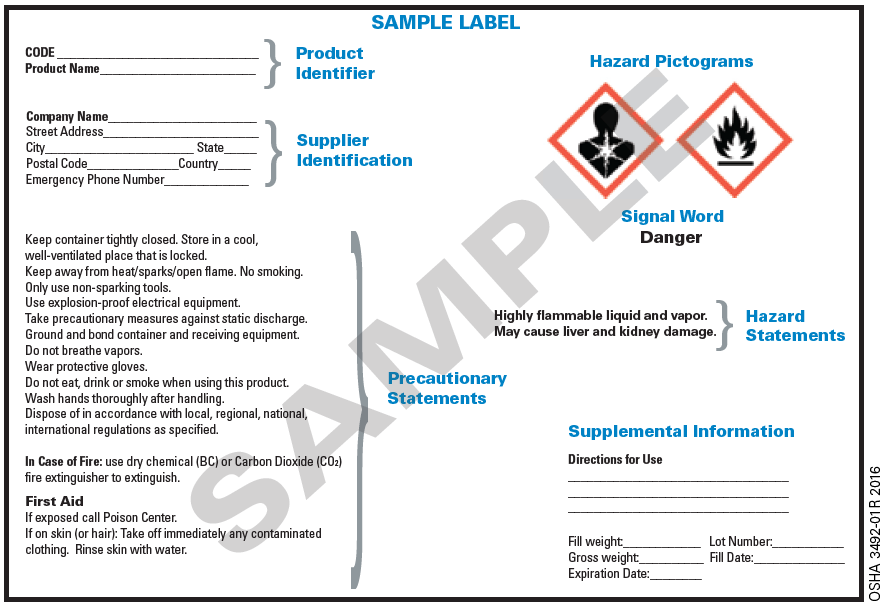
Pictograms
The HCS requires pictograms on labels to alert users of the chemical hazards to which they may be exposed. Each pictogram consists of a symbol on a white background framed within a red border and represents a distinct hazard(s). The pictogram on the label is determined by the chemical hazard classification.
| Compressed Gas Cylinder | Corrosion | Environment | Exploding Bomb | Flame Over Circle |
|---|---|---|---|---|
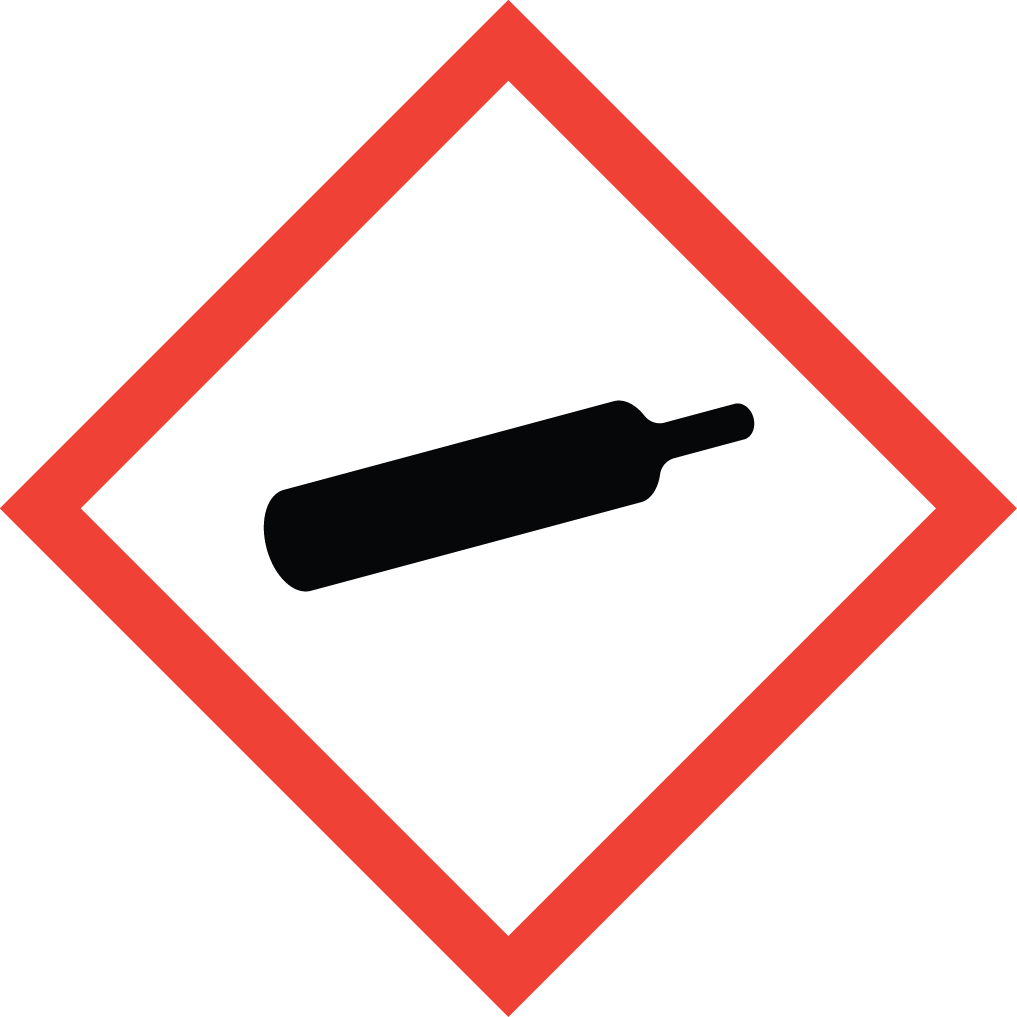 |
 |
 |
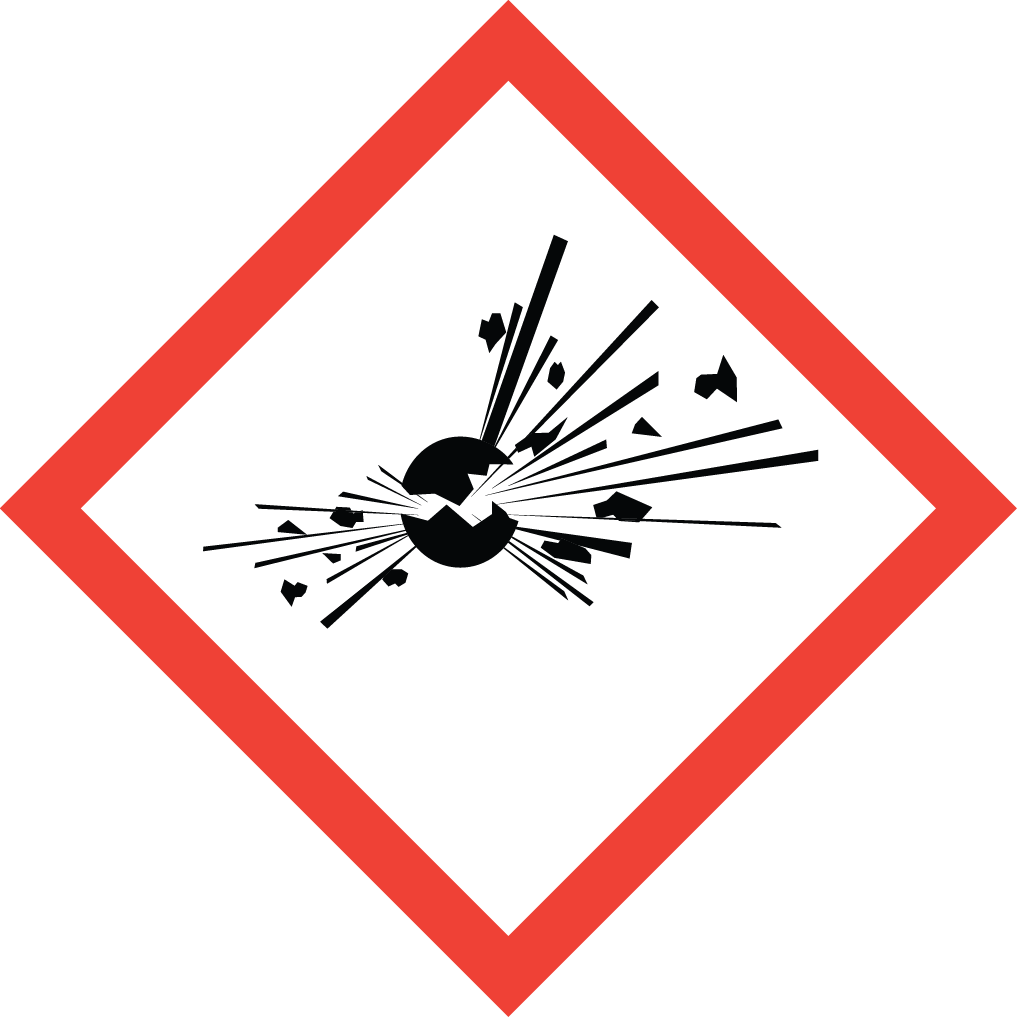 |
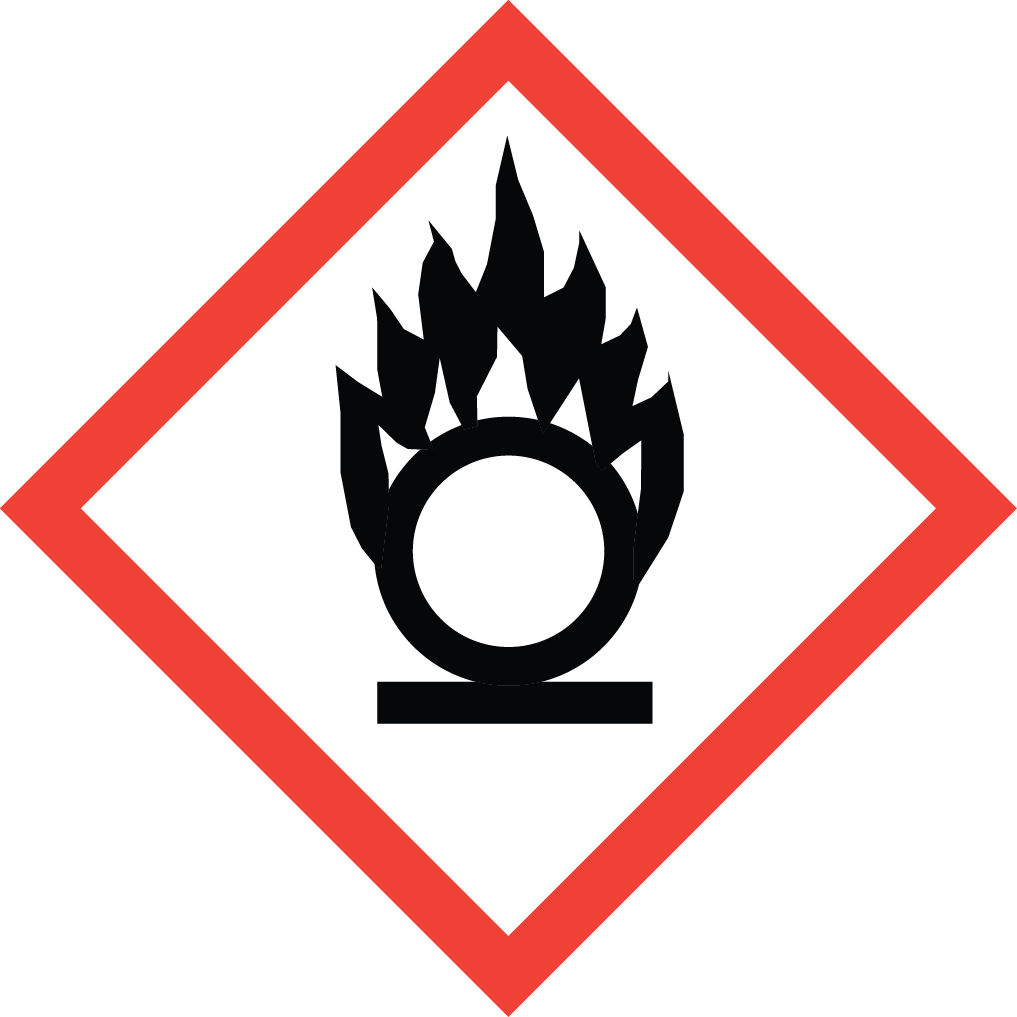 |
|
|
|
|
|
| Health Hazard | Flame | Exclamation Mark | Skull & Crossbones |
|---|---|---|---|
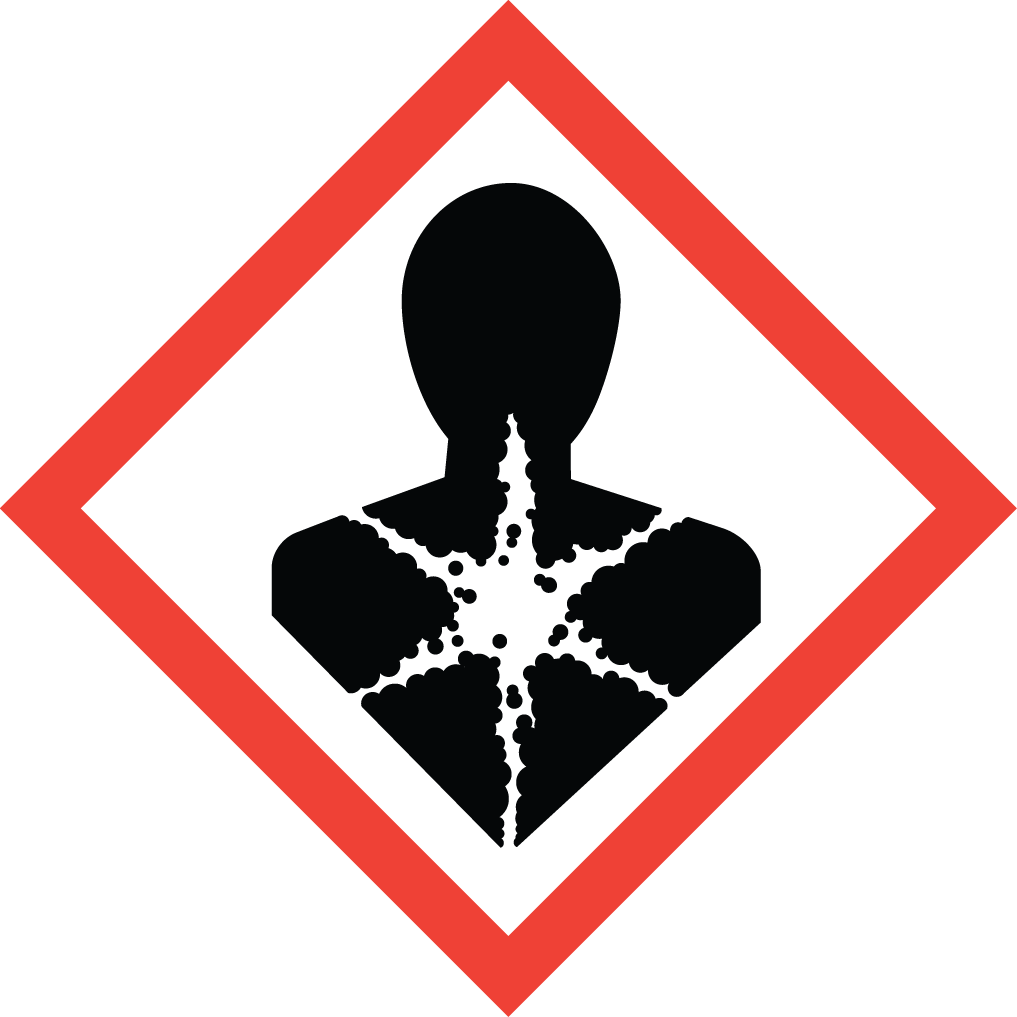 |
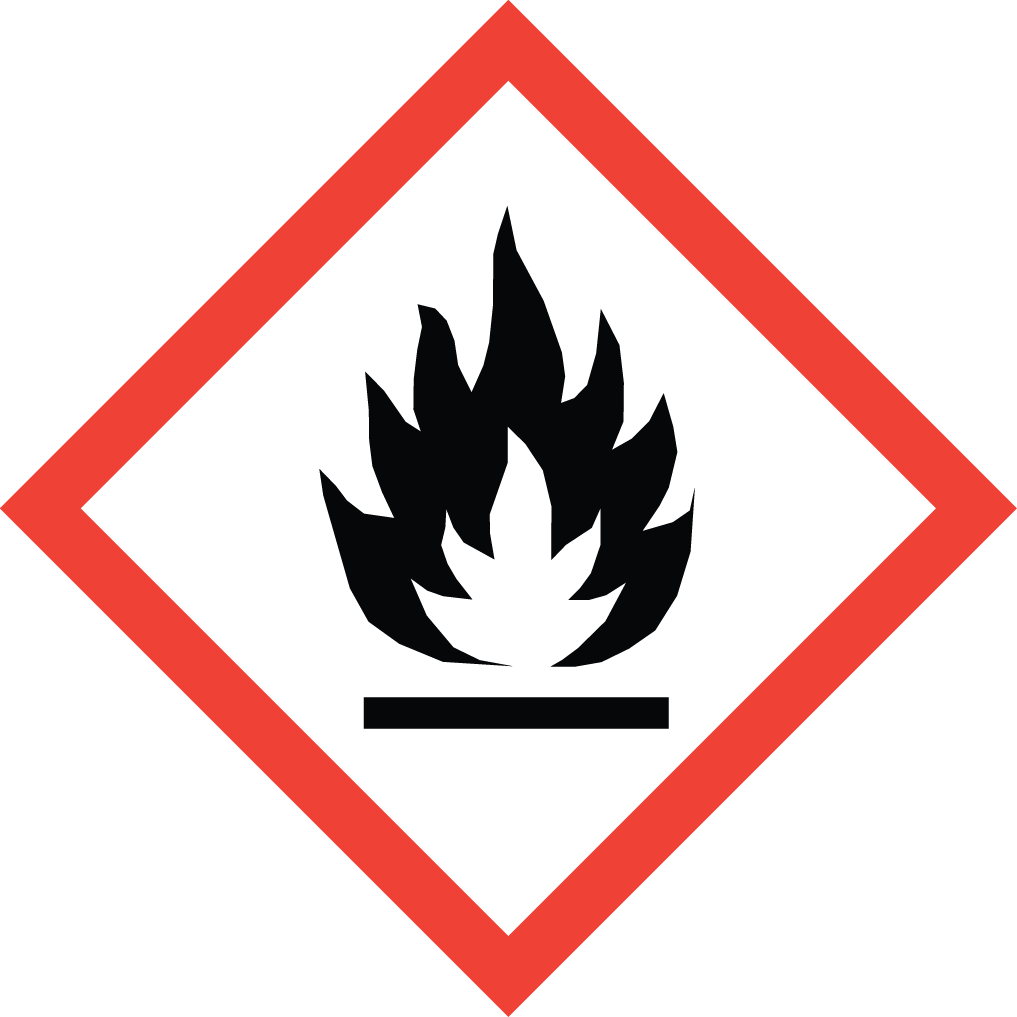 |
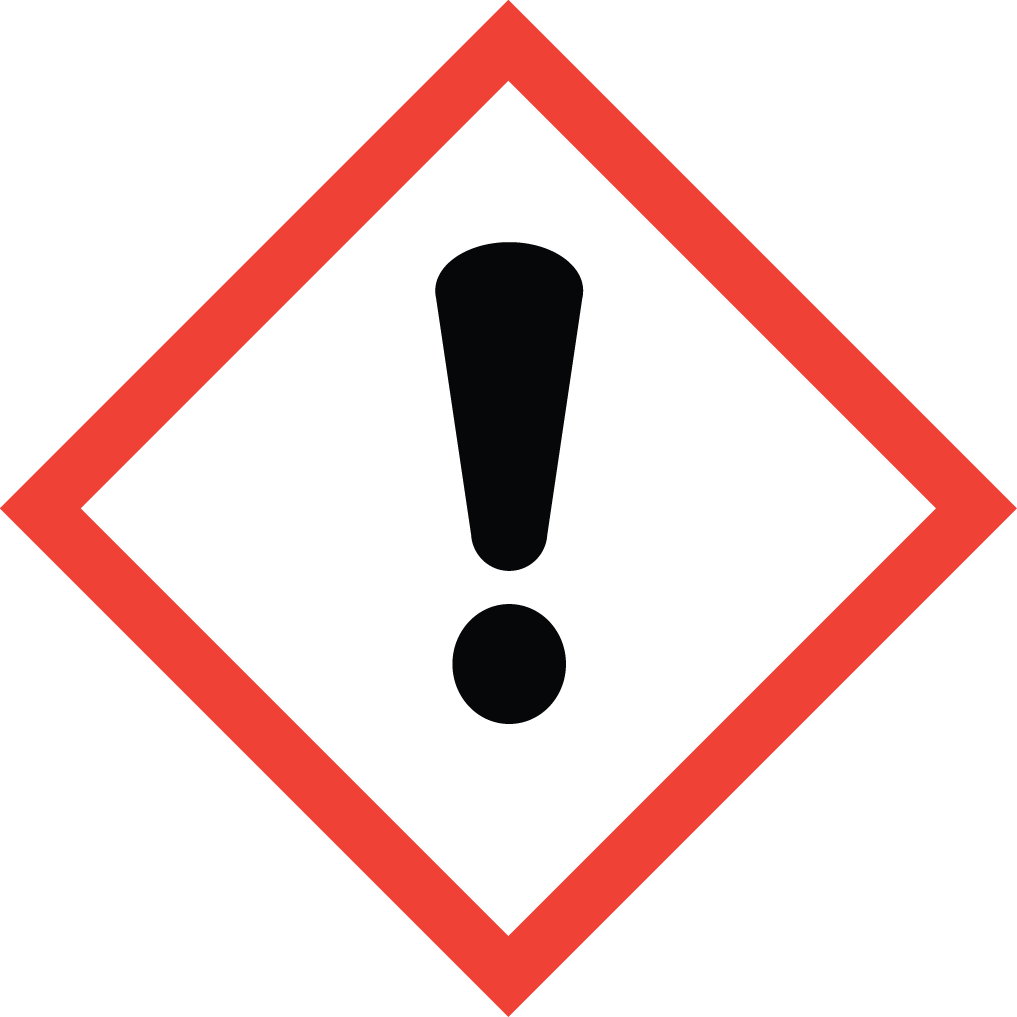 |
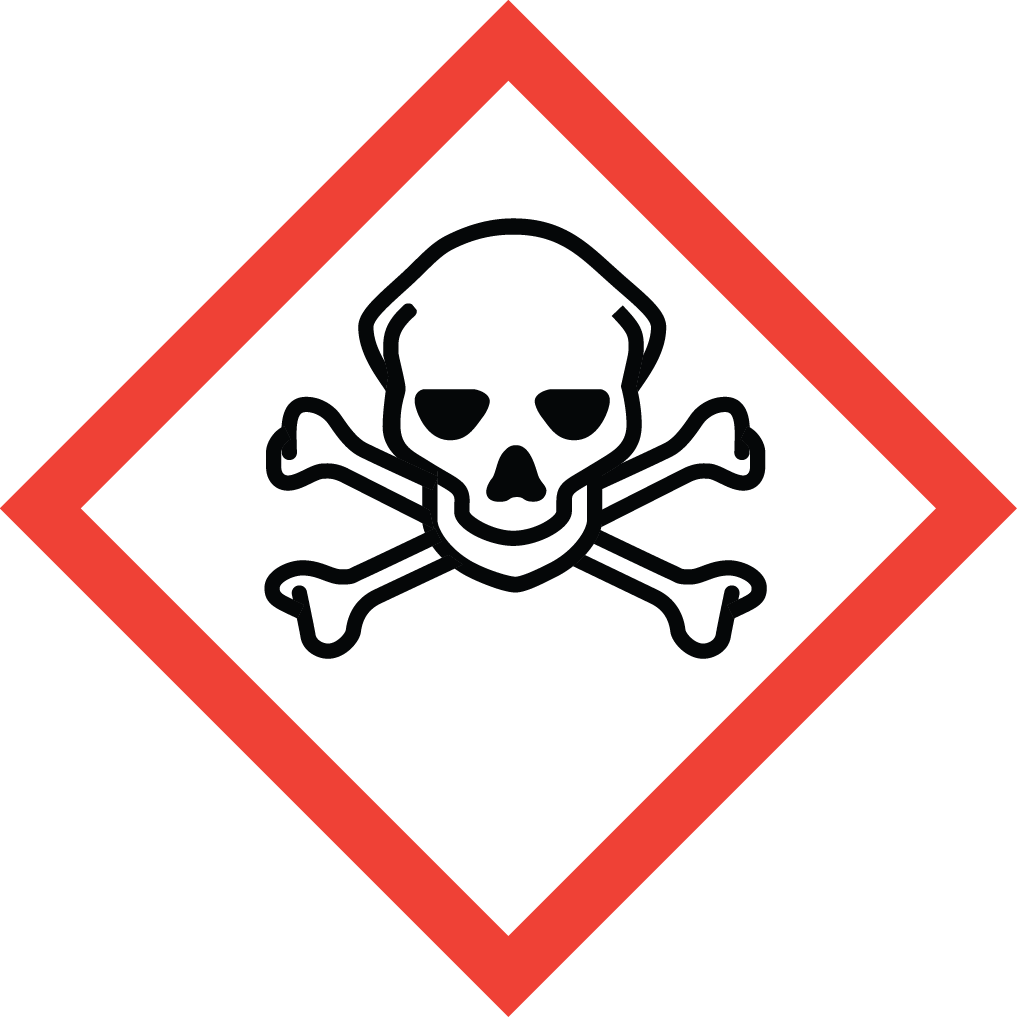 |
|
|
|
|
Safety Data Sheets
The SDS includes information such as the properties of each chemical; the physical, health, and environmental health hazards; protective measures; and safety precautions for handling, storing, and transporting the chemical. The information contained in the SDS is largely the same as the MSDS, except now the SDSs are required to be presented in a consistent user-friendly, 16-section format.
- Identification includes product identifier; manufacturer or distributor name, address, phone number; emergency phone number; recommended use; restrictions on use.
- Hazard(s) Identification includes all hazards regarding the chemical; required label elements.
- Composition/Information on Ingredients includes information on chemical ingredients; trade secret claims
- First-Aid Measures includes important symptoms/effects, acute, delayed; required treatment.
- Fire-Fighting Measures lists suitable extinguishing techniques, equipment; chemical hazards from fire.
- Accidental Release Measures lists emergency procedures; protective equipment; proper methods of containment and cleanup.
- Handling and Storage lists precautions for safe handling and storage, including incompatibilities.
- Exposure Controls/Personal Protection lists OSHA’s Permissible Exposure Limits (PELs); ACGIH Threshold Limit Values (TLVs); and any other exposure limit used or recommended by the chemical manufacturer, importer, or employer preparing the SDS where available as well as appropriate engineering controls; personal protective equipment (PPE).
- Physical and Chemical Properties lists the chemical’s characteristics.
- Stability and Reactivity lists chemical stability and possibility of hazardous reactions.
- Toxicological Information includes routes of exposure; related symptoms, acute and chronic effects; numerical measures of toxicity.
- Ecological Information (non-mandatory)
- Dispersal Considerations (non-mandatory)
- Transport Information (non-mandatory)
- Regulatory Information (non-mandatory)
- Other Information, includes the date of preparation or last revision.
TAMIU complies with the requirement to have SDSs that are readily accessible to employees for hazardous chemicals in the workplace using MSDS Online. Individuals in various laboratories can scan the QR code on the entrance door to open the website or by clicking the link below.
Training
Assigned employees must complete training via TrainTraq.
In the event of a chemical spill or splash, contact your supervisor and UPD (x2911) or 911
Shipping Hazardous Materials
Before you offer hazmat for shipment, you—the shipper—are responsible for properly classifying and packaging your material with the correct hazard communications (e.g., marks, labels, and shipping documentation). If looking to ship a hazardous material, please use the form below to notify TAMIU EHS of your expected shipment (at least two weeks prior to the anticipated shipment date).
| What is a hazardous material (hazmat)? | Hazmat is a substance that can pose an unreasonable risk to health, safety, and property when transported in commerce. The term includes a broad array of materials sorted into hazard classes and divisions by hazard type. |
| Why is the classification of a hazmat so important? | Hazmat can pose a significant safety risk while in transportation. DOT has carefully designed specific packaging, marking, and labeling requirements to ensure proper handling and safe transport. These requirements can vary between different hazard classifications, so it is imperative to first correctly identify the hazard posed by the material you plan to ship. Hazmat transportation requirements are tailored to the risks presented by each material. You need to know what you are shipping before you can properly contain the hazmat and communicate its risk. |
| What are the penalties for not complying with hazmat transportation regulations? | There can be serious civil and even criminal penalties for not complying with the hazmat transportation regulations. DOT aims to make compliance information readily available, clear, and understandable. We all need to do our part to protect people from hazardous materials accidents and incidents. |
Material-Specific Fact Sheets